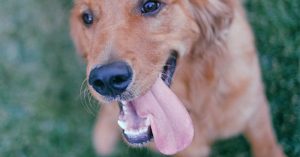
Dental disease in pets

The importance of our pet's dental health is often underestimated. Having poor dental health doesn't affect just a pet's breath. Pets with poor oral hygiene can suffer from painful oral infections, premature tooth loss and the problem is not restricted to their mouth. The bacteria causing infection in their mouths can also spread and affect other organs such as the heart, kidneys and liver.
Dental disease will develop if the plaque (a soft yellowish film that accumulates on the teeth surface after eating) becomes too thick. The bacterial population becomes more pathogenic causing inflammation of our pet's gums (gingivitis).
If left untreated the problem will become more serious and our pets will develop periodontal disease, which means the inflammation involves not only the gums but also the tissues that surround and support the teeth (gums, ligaments and bone). The damage to our pet's teeth is caused by the inflammatory mediators produced to fight the infection, by the bacteria themselves and by their metabolic products.
This condition is a very common problem and it is estimated that more than 80% of pets in the UK suffer from some form of periodontal disease. Although this disease can cause a lot of discomfort and even pain, many pets adapt, learn how to live with it and may show few signs of disease.
Common signs of periodontal disease in our pets include bad breath, appearance of a yellowish-brown crust near the gum line, red looking gums that may bleed easily, reluctance to eat, decreased appetite, difficulties eating, loose or missing teeth, depression and weight loss. Some pets can drop the food from their mouths when they try to eat and dribble.
The treatment for pets suffering from this condition is the removal of the bacterial plaque off the surface of their teeth through professional dental cleaning under general anaesthesia and can include teeth extraction if severely damaged teeth are found during the procedure.
It is really worth taking the time and the necessary measures to prevent this disease and the best way to do it is to regularly remove the plaque from our pet's teeth. This can be achieved through daily brushing using an appropriate pet safe toothbrush and toothpaste. It is not recommended to use toothpaste designed for humans since pets can't spit the paste out like we do. They will swallow the product and it can upset their stomach.
For pets that do not allow regular tooth brushing other options such as giving your pet chew toys or feeding them hard or course textured food can also help. Ideally pet owners should start brushing their pet's teeth from a young age, so they can gradually get used to the procedure and feel comfortable with it.
Would you like to know more about cats and dogs? Check our Feline and Canine Courses:
Feline courses
Canine courses
Published: 22 Apr 2016
Read the previous article: Cats: Indoors or Outdoors?

